To remove ice from tires, use a de-icer spray that is safe for windshield wipers. An ice scraper can also be used to remove ice buildup from tires and wheel wells. To prevent ice buildup on your tires, spray them with a silicone tire treatment. After driving, remove slush buildup in wheel wells to prevent ice from forming. If ice does collect on your tires, do not attempt to remove it using a hammer or mallet, as this may dent or damage your car.
Table of Contents
Freezing temperatures, snow, and ice can damage tires. Cold temperatures cause your tires to lose pressure, increasing wear. Even worse, freezing conditions can cause tires to stiffen and crack, and even puncture. This contributes to blowouts. Summer tires are much more susceptible to this damage than winter tires. This is why it’s important to switch to snow tires as temperatures drop.
The best way to protect your tires from ice is by parking your car inside a heated and protected garage. If this isn’t possible, it’s imperative to take steps to protect your car from snow without a garage. Preventative measures will go a long way to increasing your car’s longevity.
Ice buildup on car tires can cause damage to the rubber. Not only that, but ice buildup on tires and wheel wells reduces traction, hinders the performance of your suspension, and can even restrict your car from turning. Follow these tips for keeping car tires ice-free in order to protect your vehicle from expensive damage.
A high-quality de-icer spray that is safe for windshield wipers is also safe for use on tires.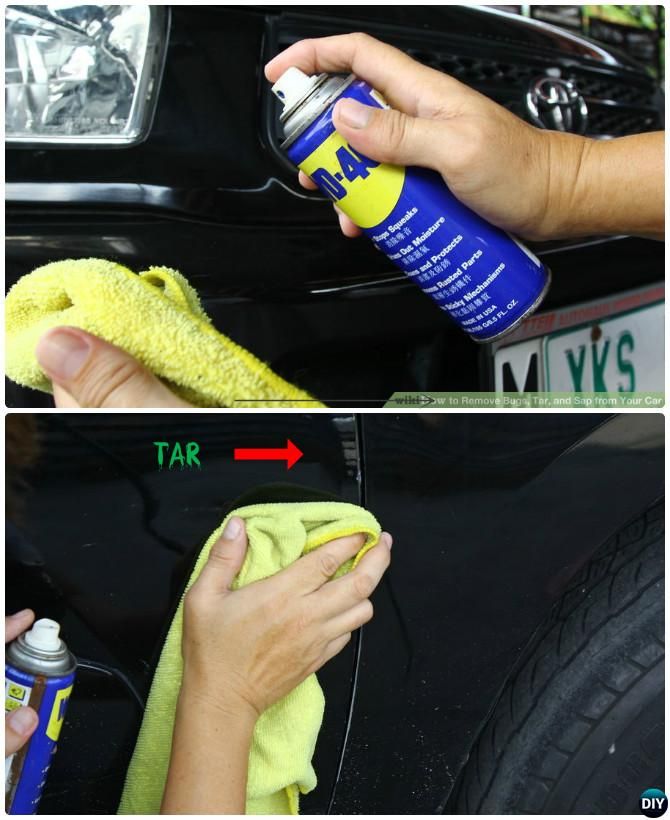 These sprays are designed to melt ice without degrading rubber wiper blades, so they will not damage your tires. If your tires have ice buildup, brush off any snow with an ice scraper equipped with a brush, then thoroughly spray the hard ice buildup with a de-icer.
These sprays are designed to melt ice without degrading rubber wiper blades, so they will not damage your tires. If your tires have ice buildup, brush off any snow with an ice scraper equipped with a brush, then thoroughly spray the hard ice buildup with a de-icer.
Spray the edges of ice buildup where possible, to melt the ice where it is frozen to your tire.
If you can, spray the edges of the ice buildup. This can melt ice where it is fused to your tire and wheel wells, making it easier to remove large pieces of ice.
Fast-Acting Windshield De-Icer
Prestone | Windshield De-Icer
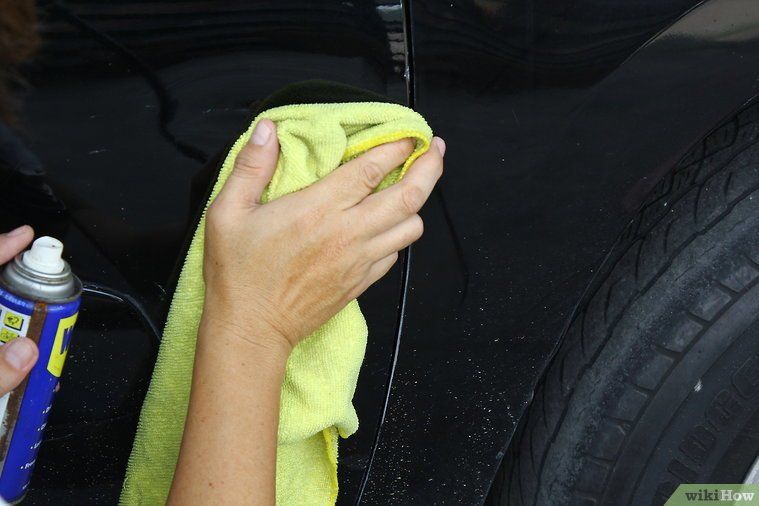
Buy Now
Check Home Depot
We earn a commission if you click this link and make a purchase at no additional cost to you.
This long-handled ice scraper is great for removing heavy ice. The scraper end can be used to scrape and pry large chunks of ice off your tires and wheels. Use the tool carefully to avoid scratching paint and wheels. If you’ve sprayed your tires with de-icer first, a good scraper will easily pop large ice buildup off your tires.
Durable Snow Brush
AstroAI | Snow Brush | Detachable Ice Scraper
Buy Now
Check Home Depot
We earn a commission if you click this link and make a purchase at no additional cost to you.
Make ice easy to remove from your tires by spraying them with this silicone-based tire treatment spray. It works like a no-stick barrier that hinders ice formation. Even if ice does form, it will be much easier to remove when there is a layer of silicone between the ice and your tires.
Silicone is not dissolved or washed away by water, snow, and ice. Plus, it is not harmful to tires. You can spray it on wheels and wheel wells as well, to make removing ice a breeze.
Tire Shine and Protection
Milwaukee Muscle | Black Pearl | Tire Shine | Silicone Spray
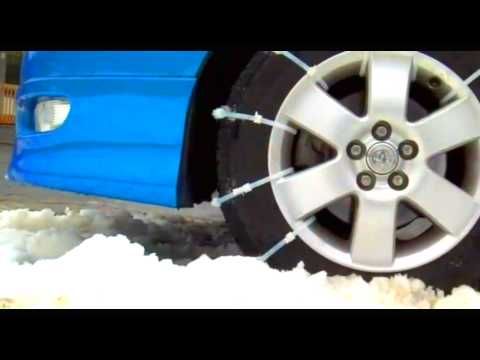
Buy Now
We earn a commission if you click this link and make a purchase at no additional cost to you.
Most of the ice that forms on tires and wheels wells is accumulated by driving through icy slurry on salt roads. This half-melted material clings to your car and freezes solid when you park. To keep this from happening, use the brush end of your ice scraper to clear slushy buildup from tires and wheel wells when you park.
Do not use hammers, mallets, or chisels to remove ice from tires, wheels, and wheel wells. Doing so makes it extremely likely that you dent your car, puncture your wheel wells, or scrape your wheels. One missed hammer blow in icy conditions can put a serious dent in your car. Even worse, you might not see the damage you’ve done to your vehicle until you finally get that stubborn ice to come loose.
To get snow and ice off your tires, employ methods that work without damaging your car. The best way to keep your tires ice free and ready for driving are:
These tips allow you to get stubborn ice and snow off your tires, prevent ice buildup, and keep your car in pristine condition. Winter traction is a must, so make sure you take steps to keep your wheels and tires free of ice buildup.
by Richard Rowe
Ice buildup in wheel wells may seem like an esoteric concern, but it's anything but to those who have to deal with arctic and sub-arctic conditions every year. While getting rid of rock-hard ice may be a bit of a pain, keeping it from building up or sticking in the first place is the work of a few moments a day.
This is the simplest and most caveman-esque way to get rid of ice, and it'll undoubtedly work if you hit the car or inner wheel well hard enough and with a big enough hammer. It also has the unfortunate side effect of leaving some nice, round dents in your car if the ice is too thick. Try giving the ice itself a few hits with a recoil-less hammer to fracture it, then give the inner wheel well a few solid taps with a rubber mallet. If it doesn't break free immediately, proceed to another method.
This method works well if you've got the room to fit a hammer and chisel into your wheel-well, but is fairly labor intensive. If you're using this method, try chiseling out the ice at the very top of the wheel well first; this ice is like the keystone in an arch and helps keep the rest of it in place. Once you've removed a chunk from the center-top of the wheel well, the rest may just fall out with a few taps from a hammer or mallet.
If you're using this method, try chiseling out the ice at the very top of the wheel well first; this ice is like the keystone in an arch and helps keep the rest of it in place. Once you've removed a chunk from the center-top of the wheel well, the rest may just fall out with a few taps from a hammer or mallet.
This method requires some care, but it may be the only one if you can't get in with a chisel and mallet. Acquire a propane plumbers torch from a hardware store, turn it on low, then carefully slide it all the way to the back-top of your wheel well. Angle the nozzle so it points at the ice at an angle; otherwise, water from the ice will fall directly into the flame. Ideally, place a piece of leather over the top of the tire to protect it, but otherwise, just keep the torch pointed away from it. Don't burn all the way through the ice -- just get it thin enough that a mallet breaks it loose.
There are a lot of deicers on the market, and any of them will help to prevent ice buildup inside wheel wells.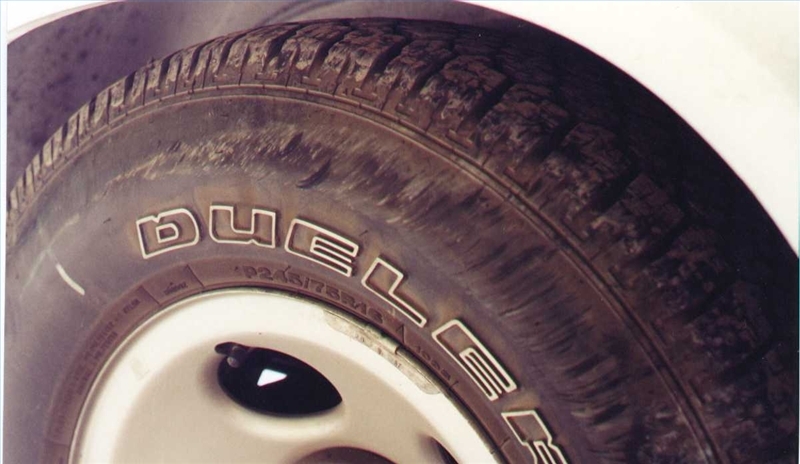 You may use an 80-20 mix of propylene glycol -- not far-more-poisonous ethylene glycol -- antifreeze and dish detergent in a spray bottle if you're caught in a pinch. Use it sparingly, because even that "environmentally friendly" propylene glycol isn't entirely safe around pets. The old-school approach is to get rid of the ice, then liberally spray the fender well with penetrating oil. It won't necessarily keep ice from building up, but it helps it to release much easier.
You may use an 80-20 mix of propylene glycol -- not far-more-poisonous ethylene glycol -- antifreeze and dish detergent in a spray bottle if you're caught in a pinch. Use it sparingly, because even that "environmentally friendly" propylene glycol isn't entirely safe around pets. The old-school approach is to get rid of the ice, then liberally spray the fender well with penetrating oil. It won't necessarily keep ice from building up, but it helps it to release much easier.
Writer Bio
Richard Rowe has been writing professionally since 2007, specializing in automotive topics. He has worked as a tractor-trailer driver and mechanic, a rigger at a fire engine factory and as a race-car driver and builder. Rowe studied engineering, philosophy and American literature at Central Florida Community College.
Practice shows that an impressive proportion of motorists do not pay any attention to situations when snow sticks to the fender liner, wheel arches of their cars.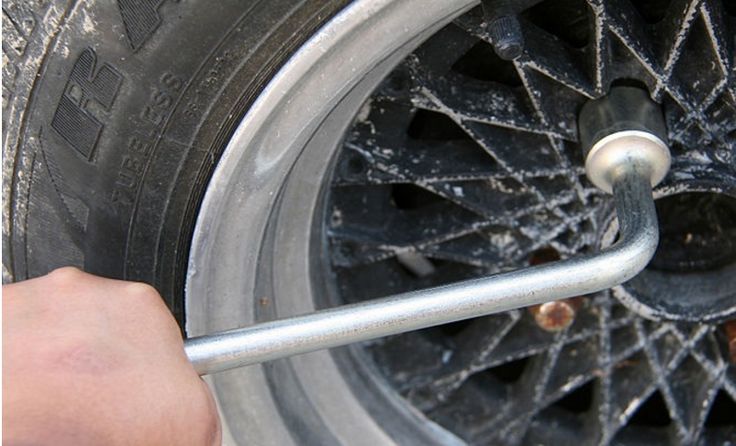 They argue that the metal will cope with soft snow, and therefore there is no point in worrying.
They argue that the metal will cope with soft snow, and therefore there is no point in worrying.
The reality is different. Ordinary soft snow can turn into a serious threat. Therefore, ignoring the accumulation of snow masses is strongly discouraged.
There is another problem. Drivers do not know how to act correctly in this situation. As a result, they can harm their own car with their own hands.
Considering the disappointing statistics of breakdowns caused by the banal buildup of snow, you need to find out what the danger is, how to properly get rid of snow and ice, and what mistakes you should not make. Plus, we will separately talk about the means that have shown themselves well in the issue of preventing sticking.
When it snows, the cars look about the same. All drivers are trying to drive through snowdrifts. In this case, the wheels during rotation scatter the fallen snow on the sides.
Gradually there is sticking to the bumper, sills, but sticking is most intense in the area of the wheel arches. It would seem that there is nothing terrible and dangerous here. It's just snow. It is quite soft in its structure, and therefore cannot cause any harm to the car. Not everything is as harmless as it might seem at first glance.
It would seem that there is nothing terrible and dangerous here. It's just snow. It is quite soft in its structure, and therefore cannot cause any harm to the car. Not everything is as harmless as it might seem at first glance.
Nothing bad happens as long as the car moves in the general flow. Even if the snow completely fills the space of the wheel arches, the structure remains loose and soft. Any turn of the steering wheel, and the wheel will cut the snow mass. No harm or damage.
But there are other situations. For example, when a car, having collected snow in the fenders, moves straight for a long time. Almost never turns. During this period, the adhering snow becomes more dense, covered with a crust of thick ice. As a result, a dense block is formed next to the rotating wheel. And the gap between them is minimal.
The same thing happens when the car is left outside in the cold. During downtime, the snow mass also turns into ice.
Ice-covered mass of snow is much more dangerous than sticky soft snow.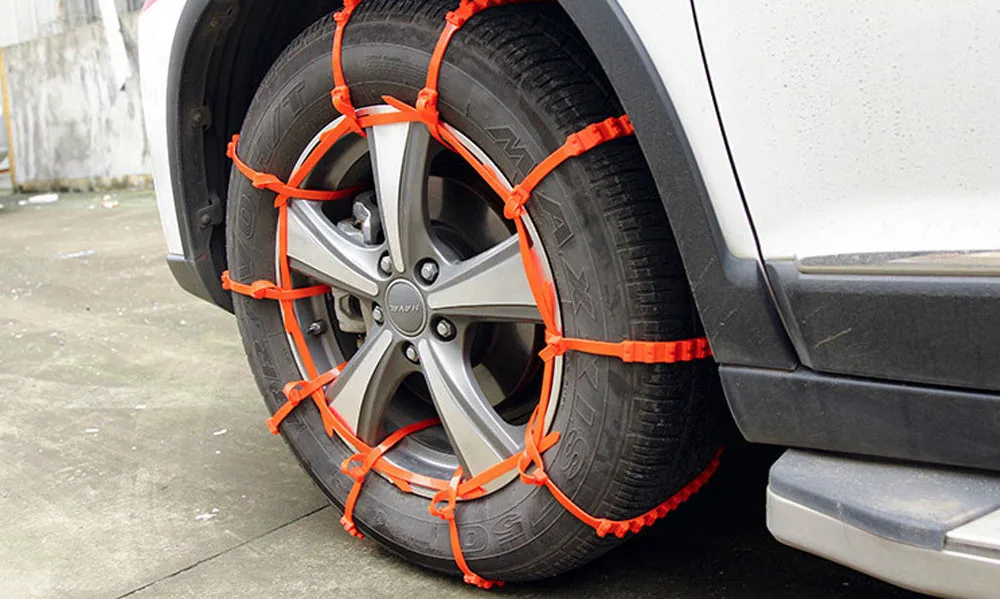 There are several reasons for this:
There are several reasons for this:
 There are a number of examples when ice in the fender liner led to deformation of the body.
There are a number of examples when ice in the fender liner led to deformation of the body. If the wheel starts to beat from the ice that has stuck to the plastic elements, it is completely possible that the plastic fender liner or mudguard will simply fall off. They are usually held on light pistons. Less often on self-tapping screws. But even this is sometimes not enough to keep the fender liner in place.
It's not hard to imagine what flying parts can do to a machine.
One more thing. During snowfalls, in order to fight snow drifts on the roads, they are covered with special reagents. Sometimes it's just salt. Or more powerful chemicals. Sticking together with snow, reagents can harm plastic, provoke active corrosion on metal elements. Plus, they quickly destroy electrical wiring, break contacts, even with an insulation layer.
Or more powerful chemicals. Sticking together with snow, reagents can harm plastic, provoke active corrosion on metal elements. Plus, they quickly destroy electrical wiring, break contacts, even with an insulation layer.
The conclusion is obvious. It is necessary to carefully monitor the condition of the wheels, check for the presence of sticking snow on the fender liner and take the necessary measures in a timely manner.
Now the question is how to properly knock off the accumulated ice from the car fender liner and do it as safely as possible.
In fact, there are several ways to carefully remove all the stuck snow on your car's fender liner. But some drivers do things differently. They simply remove these protective elements. But the SDA and the Code of Administrative Offenses say that it is impossible to do this with the rear fender liner. This is due to the likelihood of an emergency on the road, since snow, various debris, etc. are actively ejected from under the car without rear wheel arch liners.
They simply remove these protective elements. But the SDA and the Code of Administrative Offenses say that it is impossible to do this with the rear fender liner. This is due to the likelihood of an emergency on the road, since snow, various debris, etc. are actively ejected from under the car without rear wheel arch liners.
If it becomes necessary to remove ice from under the wheel arches of the car, you can apply the following methods.
 Water provokes melting and sticking of ice. The procedure takes a minimum of time. The same can be done at home.
Water provokes melting and sticking of ice. The procedure takes a minimum of time. The same can be done at home.  But it is more powerful, plus not everyone has it on the farm. Excessive heat from a heat gun can damage plastic parts and paintwork. Therefore, it is better to use a household hair dryer. With its help, ice from the fender liner is removed longer, but it is safer for the car itself.
But it is more powerful, plus not everyone has it on the farm. Excessive heat from a heat gun can damage plastic parts and paintwork. Therefore, it is better to use a household hair dryer. With its help, ice from the fender liner is removed longer, but it is safer for the car itself. Don't forget to clear the wheel arches of residual snow at the end. Especially if you drove on roads where special reagents are scattered. A simple rinse with clean water will suffice. But sometimes it is recommended to use water together with detergents.
It is easy to neutralize the action of substances if you know whether they are alkaline or acidic.
There are those drivers who are just trying to beat the ice off the fender liner. For some reason, they think that it is safe and harmless to the car.
What you definitely shouldn't do is use bayonet shovels and pry bars to break the ice. Otherwise, the likelihood of damage to the machine increases. And with my own hands.
And with my own hands.
A common mistake is to hit hard on ice. This includes any tools, be it a pry bar, a hammer, a shovel, or some kind of metal pipe or wooden stick.
Properly knocking off stuck and hardened snow will definitely not work. But the fender liner and mudguards will certainly suffer. And this is at best. You can also damage the suspension, shock absorbers, springs and other important parts of the vehicle. As a result, the driver will face significant financial expenses in order to repair the car.
Another common mistake is an attempt to knock off ice with the wheels by turning the steering wheel. The driver sits behind the wheel and begins to intensively turn the steering wheel in different directions, turning the wheels all the way. In the best case, the motorist will damage the rubber, on which cuts form. You can't go far with these tires.
The consequences will be even worse if the ice in the fender liner catches the suspension elements. A sharp rotation will lead to damage to the chassis, elements of the brake system, suspension. Without a preliminary inspection, it is difficult to say whether the snow has stuck only to the fender liner, or whether the ice has spread much wider in the area of \u200b\u200bthe wheel.
A sharp rotation will lead to damage to the chassis, elements of the brake system, suspension. Without a preliminary inspection, it is difficult to say whether the snow has stuck only to the fender liner, or whether the ice has spread much wider in the area of \u200b\u200bthe wheel.
Therefore, try not to make other people's mistakes and act competently in such situations. Don't rush, don't make rash decisions.
In order to prevent further snow from sticking to car fender liner, you can resort to different methods and solutions.
The most drastic measure is to stop using the car until the snow passes and spring comes. Maybe this will surprise someone, but many drivers leave the car for the winter, carry out conservation measures and, with the onset of cold weather, begin to operate again.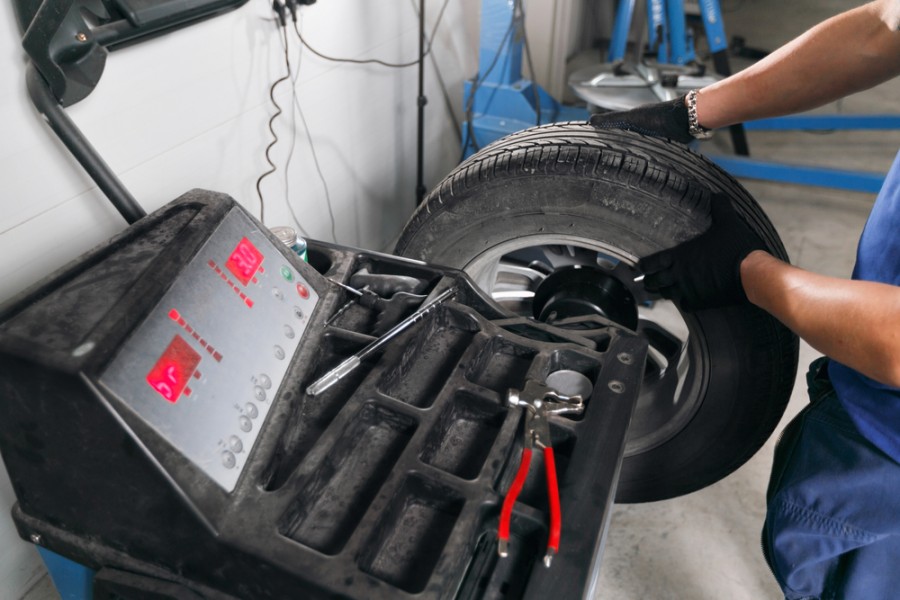 Usually this is done with cars that cannot or should not drive on slippery roads in winter, or this is a spring-summer type car with an open top.
Usually this is done with cars that cannot or should not drive on slippery roads in winter, or this is a spring-summer type car with an open top.
But for most drivers this is not an option. At the same time, it is necessary that the snow still does not stick to the fender liner and does not lead to potentially serious and dangerous consequences.
Then the question arises of how you can treat your car's wheel arch liners to prevent snow from sticking to them. Here it is worth highlighting several popular solutions.
Of course, you can invest heavily and take special chemicals that are used in military and civil aviation. But in practice it is too expensive and does not make sense. There are much simpler and more affordable solutions that are not inferior in efficiency to expensive chemistry.
 As in the case of using other means, you need to follow a certain sequence. First, remove all dirt and frost. It is important to wait until it is completely dry. Then processing is done with WD-40. It is not worth it to immediately hit the road on snow-covered roads. Wait for the WD-40 to soak in and dry. You will be able to prevent possible snow from sticking to car fender liner by creating a greasy surface. As a result, the snow simply will not stick due to poor adhesion. Just keep in mind that if you lubricate with WD-40, then such a tool will have certain disadvantages. First, the WD-40 formulation itself is expensive. And secondly, one treatment is enough for 1-2 weeks, no more. Think about whether you are ready to spend money on a can of WD-40 every month.
As in the case of using other means, you need to follow a certain sequence. First, remove all dirt and frost. It is important to wait until it is completely dry. Then processing is done with WD-40. It is not worth it to immediately hit the road on snow-covered roads. Wait for the WD-40 to soak in and dry. You will be able to prevent possible snow from sticking to car fender liner by creating a greasy surface. As a result, the snow simply will not stick due to poor adhesion. Just keep in mind that if you lubricate with WD-40, then such a tool will have certain disadvantages. First, the WD-40 formulation itself is expensive. And secondly, one treatment is enough for 1-2 weeks, no more. Think about whether you are ready to spend money on a can of WD-40 every month. 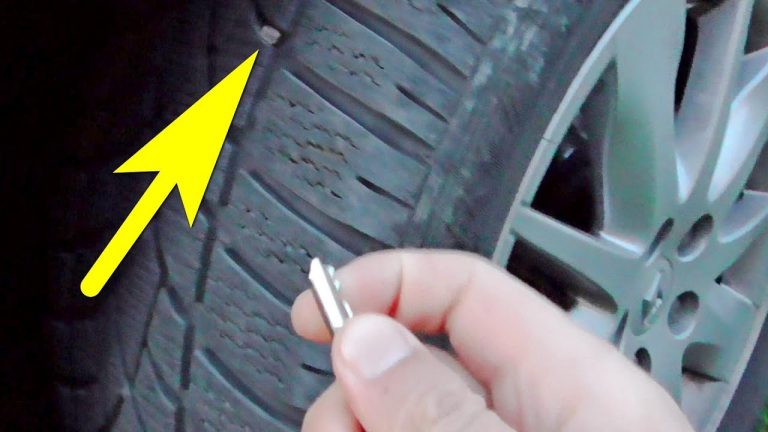 If you smear the thresholds, arches and fender liner, the silicone will last for a month or even a longer period. But this is rare. You don't need to use anything extra. Silicone manages to prevent sticking. But some compounds have low efficiency, others are expensive. Plus, do not forget about the risks of buying fake auto chemicals from well-known manufacturers.
If you smear the thresholds, arches and fender liner, the silicone will last for a month or even a longer period. But this is rare. You don't need to use anything extra. Silicone manages to prevent sticking. But some compounds have low efficiency, others are expensive. Plus, do not forget about the risks of buying fake auto chemicals from well-known manufacturers.  But for processing you will need to use a brush or roller. Plus, the oil has a peculiar smell. Process is messy. But effective. The disadvantage of the product is that various dirt and dust will stick to the oil. As a result, the coating wears out and the anti-stick properties are lost when driving on snow.
But for processing you will need to use a brush or roller. Plus, the oil has a peculiar smell. Process is messy. But effective. The disadvantage of the product is that various dirt and dust will stick to the oil. As a result, the coating wears out and the anti-stick properties are lost when driving on snow. It is objectively easier to prevent snow from sticking than to deal with the consequences of ice on the fender liner. Therefore, it is worth thinking about carrying out preventive measures before the frost hits and the first snow falls.
Silicone, WD-40 and special anti-snow lubricants on fender liner and more apply quickly. Since they are sold in aerosol cans, it will take literally 20-30 minutes to process, taking into account washing and drying. But you don’t have to worry about the possible consequences after snow sticking.